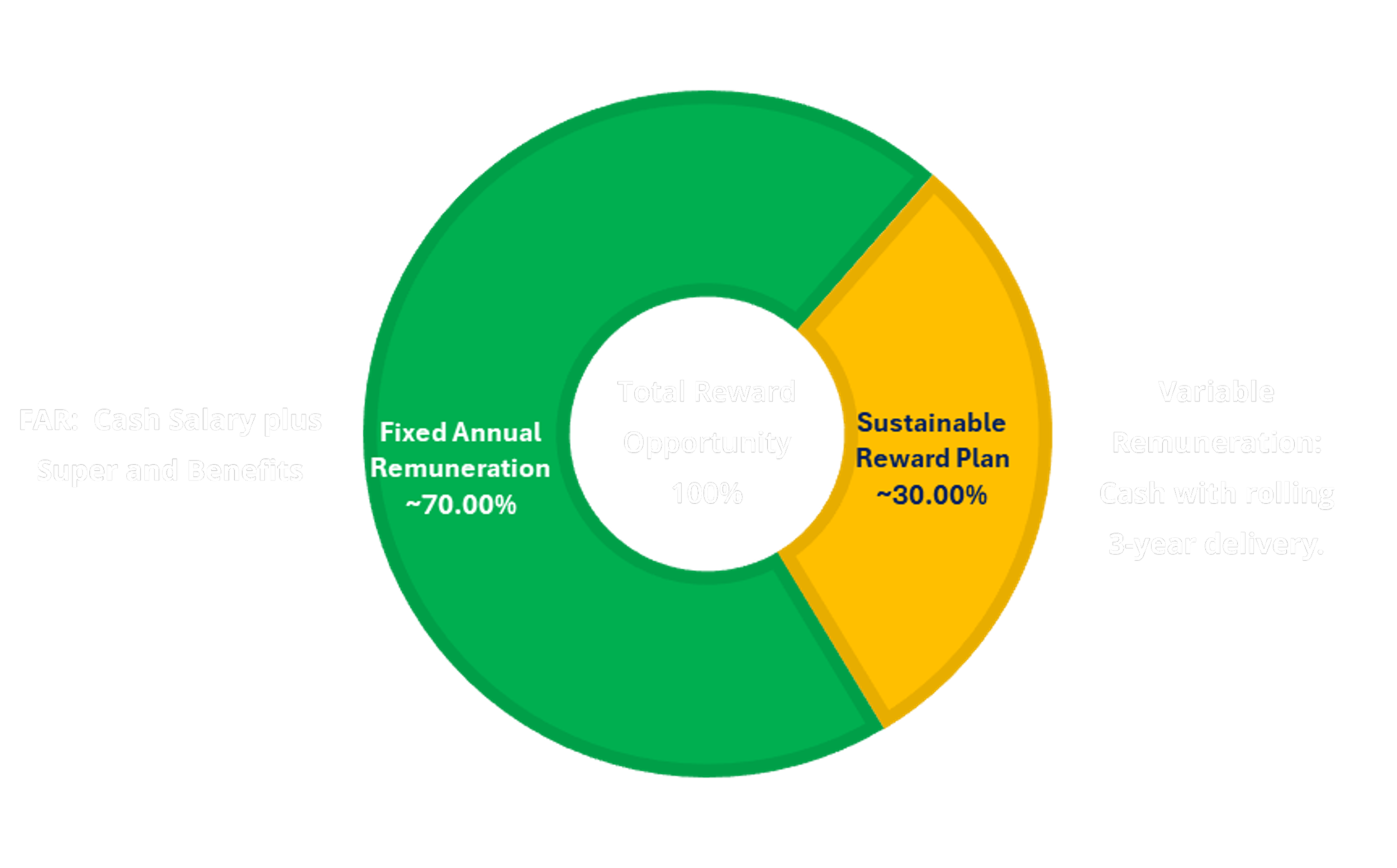BALANCE & ETHICS
The Sustainable Reward Plan

Building a sustainable and market competitive executive remuneration model
This approach proposes a balanced, sustainable and ethical model of delivering executive reward. Chart the future with balanced rewards.
CEO and executive remuneration systems need to be congruent with company values, so that what you say and what you do are connected. There is a way. A model that supports transition to an ethical remuneration process. A win-win that leads the way toward truly sustainable and renewable practices that benefit all stakeholders. A model that includes:
Market Competitive Fixed Annual Remuneration which constitutes a significant proportion of the package (~70%),
Variable Remuneration as a Sustainable Reward Plan (~30%) delivered in cash, based on a balanced scorecard including financial, strategy, customer, stakeholder, people & safety, ESG and operational measures with 3 Year rolling evaluation and delivery.
Share Ownership (if appropriate) by providing the executive with the opportunity to acquire shares in the company by converting all or part of the Variable Remuneration to equity annually at a nominal discount.
No Minimum Shareholding Requirements or mandatory holding periods. Ethical considerations apply in terms of cash-out of discounted equity.

The Performance Clusters
The Sustainable Reward Plan is focused on providing CEOs and executives with a balanced approach to variable remuneration. Results are evaluated using a corporate scorecard format with six generic performance clusters:
-
Maintaining viability.
-
Charting the future.
-
Critical people imperatives.
-
Maintaining Social license.
-
Focusing on core purpose.
-
Delivery and availability.
In the standard model each cluster has equal weighting. This needs to be adapted to suit individual business circumstances. Further detail of each cluster is set out below.
Individual executive KPIs may be factored into the model and weighted accordingly.
-

FINANCIAL PERFORMANCE
Financial performance is baseline for ensuring economic viability and sustainability. It includes:
Revenue and Profitability
Opex/Capex/Cashflow
Shareholder & Owner Returns
Other Financial Metrics
The weighting on financial measures needs to be balanced against other aspects of corporate performance.
-

STRATEGY & PLANNING
All organisations endeavour to chart their future through annual strategic planning forums, usually involving the board, CEO and executive team. This can be challenging in an ever changing world. One that often involves market, environmental, regulatory and geopolitical uncertainties. The five year plan provides a blueprint for the company’s direction and always involves a number of KPIs and other measurable targets.
-

PEOPLE & SAFETY
Real people performance involves creating and maintaining high performing, innovative and engaged teams. Especially the leadership team. This has both qualitative and quantitative aspects. The important glue of culture is beyond measurement.
Safety is paramount especially in an operating environment. Lead and lag indicators provide a sound basis for performance improvement.
-

ENVIRONMENT, SOCIAL & GOVERNANCE (ESG)
ESG is a relatively new concept which brings together sustainability practices across a range of fronts.
Environmental performance is front and centre for all utility companies as is social license. Over the next 25 years all energy based utilities will morph into renewable companies.
Effective corporate governance is at the forefront of regulator and stakeholder thinking.
-

CUSTOMER & STAKEHOLDER RELATIONS
Customers need to be at the centre of a company’s core purpose.
Shareholders expect a reasonable return on their investment. Share ownership carries risk and returns need to reflect this.
Regulators, governments, communities, employees and suppliers all have a stake in the viability or our corporations.
-

OPERATIONAL PERFORMANCE
The definition of operational performance is industry specific. In an electricity distributor it can mean network availability; in a water company it can mean timely response to sewer breaks and chokes. Forced outages in any utility or renewable company have consequences for commercial and retail end users.
All utilities and renewable companies have well developed measures of operational performance. These need to be factored into reward plans.

Delivering
Reward
The Sustainable Reward Plan design is focused on providing CEOs and other executives with a sustainable and balanced approach to delivering reward.
The standard model assumes a 3 year rolling delivery with one third delivered at the end of year one, one third at the end of year two and one third at the end of year three. The cycle continues to roll each year as set out below. This is, of course, flexible. Some companies may prefer to deliver more up-front, while others, such as renewable companies in the start-up phase, may prefer to back-end load. It will depend on cashflow and competitive positioning.
It will also depend on transition arrangements from any previous STI and LTI plans. There may be undelivered awards from these plans which will need to be worked out in the early years of implementation.
Here is an example of 3 year delivery, assuming on-target performance for a CEO on a base FAR of $1.0m:


“Sometimes the numbers don’t tell the full story. There may have been exceptionally favourable circumstances or windfall gains which distort results. Or there may have been a force majeure which impacts results and is outside of organisational or executive control (such as a bushfire or extreme weather event) . In these cases the remuneration committee or board may choose to exercise discretion in interpreting an individual KPI score or the overall result.”
Geoff Nunn, Governance Update July 2024,

Further Reading
Re-balancing the Pendulum
In the newsletter below remuneration specialist, Geoff Nunn, challenges the executive remuneration orthodoxy and proposes a balanced, sustainable and ethical model of delivering reward.
“The Sustainable Reward Plan - A Governance Update Edition”










